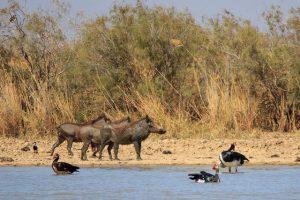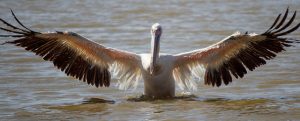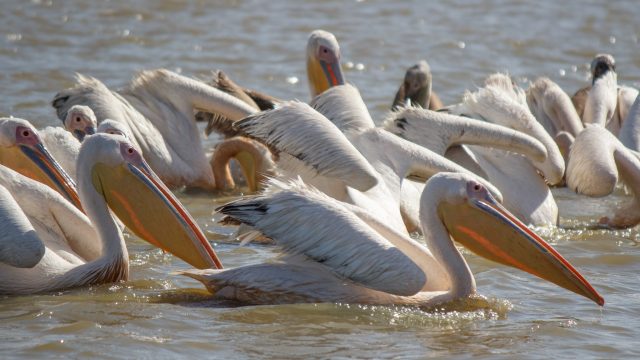When it comes to viewing wildlife in Senegal, the first place you should consider is Djoudj National Bird Sanctuary that’s located on the Senegal River Delta. The sanctuary is on the northern tip of the country (near the Mauritania border) and is nestled in Oiseaux de Djoudj National Park that’s five hours and a half north of Dakar by car. Despite being pretty far away from anything, people routinely make the drive to see this under-the-radar land. And there’s a good reason for it. At 160 kilometers wide and surrounded by water, Djoudj is a wetland oasis for wildlife, drawing million of birds to the area and making it a mind-blowing destination to see them. There are approximately 400 species of birds documented in this unique sanctuary. In fact, it was labeled as a UNESCO World Heritage Site in 1981 primarily because of its residents.

Courtesy of tjabeljan/Flickr.com
Djoudj National Bird Sanctuary is mainly populated by pelicans and flamingos that stay buoyant and stagnant on the water. In the winter, an additional 1.5 million birds migrate to the area to stay warm and take advantage of the abundant food supply in the spring, bringing the number of birds in the sanctuary up to around 3 million. The birds usually fly in from Europe to escape the cold. Other lesser known birds that are found at the site include the purple heron (known for its striking purple wings), African spoonbill (with beaks in the shape of utensils) and the long necked great egret. But the birds aren’t the only living things to keep an eye out for in this park. Warthogs are known to graze alongside the birds and tourists have reported seeing crocodiles lounging lazily on the riverbank in full view. Free roaming African cows with towering horns and gazelles sometimes venture to the water. However, look harder into the water and you might spot African manatees that are known to inhabit the water.

Courtesy of Toon van Dijk/Flickr.com
When planning your visit to the park, keep in mind that winter means the water will be jam packed with birds and draws more wildlife like the manatees and warthogs. However, there’s still plenty to see in the off-season, too. It’s true that the early bird get the worm, so arrive early in the morning just after sunrise to see the winged creatures getting active and searching for breakfast. If you come in later in the day, you’ll see less of the birds as they retire to their hiding spot after a successful morning of hunting for food. There are several bird watching towers and observatory decks to take advantage of during your visit. This will give you (what else) a bird’s-eye view of the area and allow you to quietly observe its natural surroundings. Or rent a pirogue for an idyllic journey with a tour guide who can show you all the hot spots and dwellings.
Once you arrive, take your time to immerse yourself in a scenery that was almost driven to waste by an invasive plant species, the giant salvinia. In 2000, the park was added to the list of “World Heritage in Danger” since the plants that floated on water were killing off its native plants, cutting off natural resources for the birds and mammals. Since then, there has been concentrated efforts to rid the plants which was successfully defeated in 2006.

Courtesy of Toon van Dijk/Flickr.com
Since the sanctuary is quite far from most major tourist cities, staying overnight in nearby Saint Louis is recommended. Luxury hotels like Lampsar Lodge, Hotel Mermoz, La Maison Rose and Hotel de la Poste are among the list of suggested places to book. Guests particularly enjoy Saint Louis’ convenient location to the ocean and its restaurants that are accustomed to tourists.
More from AFKTravel:
15 Things You Have To Experience In Dakar, Senegal

